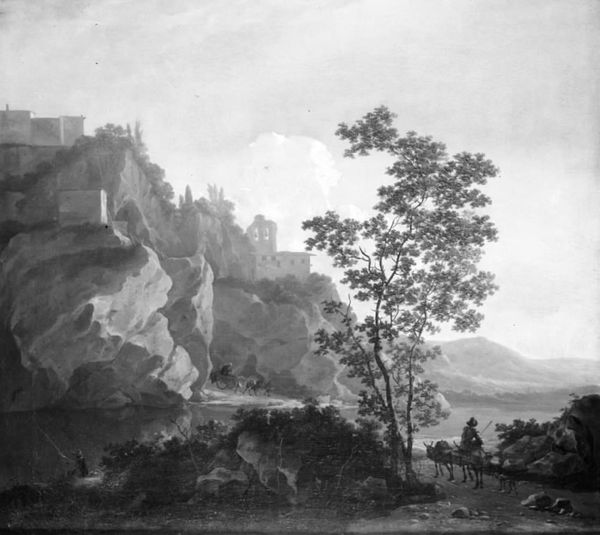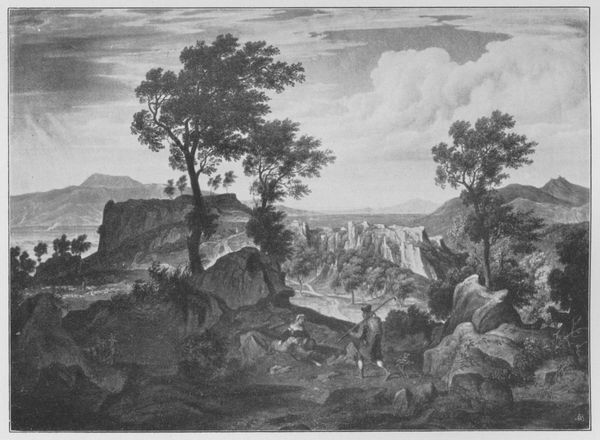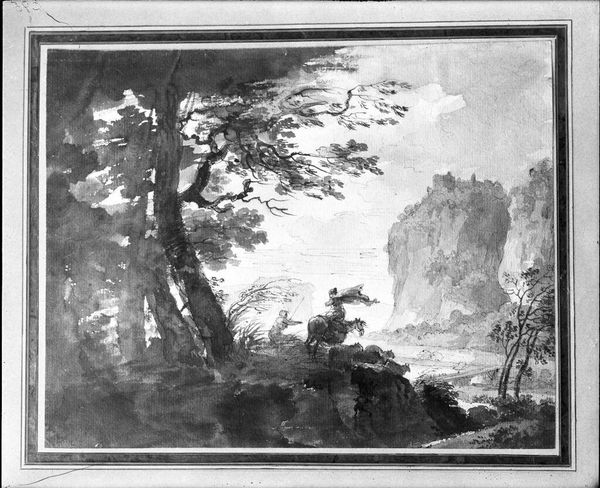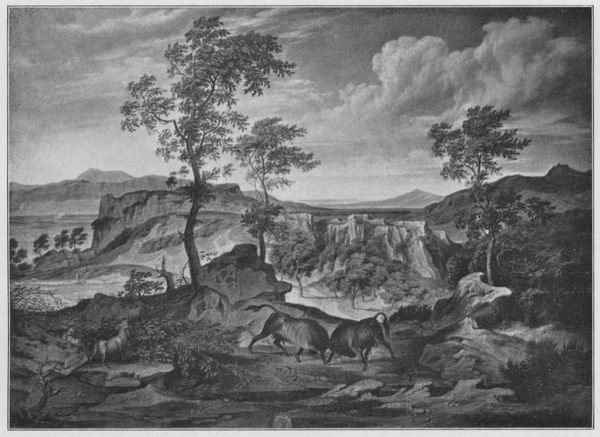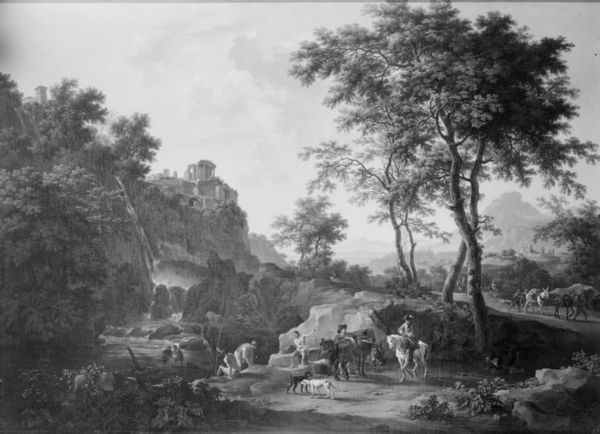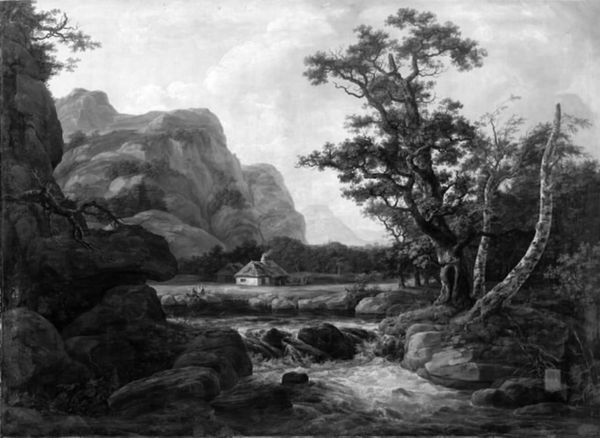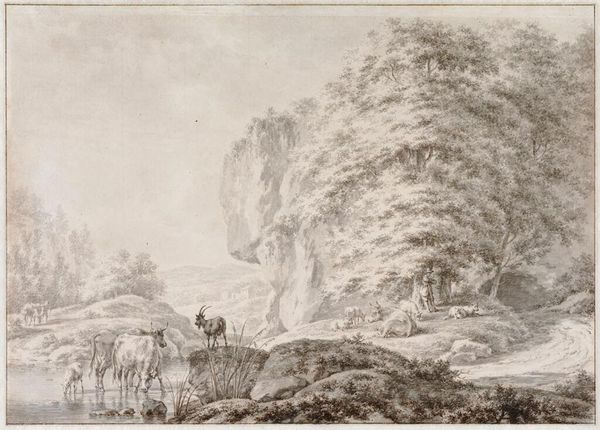
painting, oil-paint, paper, canvas
#
painting
#
pencil sketch
#
oil-paint
#
landscape
#
charcoal drawing
#
figuration
#
paper
#
canvas
#
pencil drawing
#
romanticism
#
charcoal
#
graphite
#
realism
Dimensions: 19 cm (height) x 27.5 cm (width) (Netto)
Curator: Here we have "Italiensk landskab," or "Italian Landscape," an oil on canvas created between 1825 and 1829 by H.W. Bissen. Editor: It's so interesting seeing landscape handled with such classical motifs. There’s an undeniable theatricality to this piece, something about the monochromatic palette feels staged and deliberate. Curator: The artist, primarily known for his sculptures, produced this painting after a formative journey to Italy. During his travels, he was inspired by ancient art and sought to capture its spirit here. Italy represented the pinnacle of artistic achievement and culture during that period, the Romantic era, where art schools often promoted and adopted certain traditional values, as an artist like Bissen definitely did. Editor: It’s fascinating how those artistic pilgrimages impacted materiality. It almost looks like graphite, or even charcoal in areas. It challenges the expectation of vibrancy that often goes together with oil, with an almost stark feel to it that really gives it an archaic appearance. Curator: Right, the monochrome palette likely was used in his effort to emulate the texture of ancient sculptures. The romantic landscapes of Italy became powerful symbols during the period. They connected viewers to a historical past, reinforcing cultural values of heroism and honor. The ruins in the background might even point to specific sites that shaped aesthetic ideals of the era. Editor: Yes, there’s a lot of tension between high and low here— between a highly academic pursuit and the somewhat humble materials which make it what it is. It's amazing that an oil painting can simulate the feel of a humble pencil sketch! And how that affects the perception of the place represented. It takes Italy out of the land of the vibrant and makes it something severe. Curator: The figures and the overall composition do borrow directly from classical art; however, you can’t overlook the artist’s own individual approach. In his role as a prominent Danish artist, he would've played a major role in defining national artistic tastes and promoting specific cultural values within that community. Editor: This almost severe austerity—both its aesthetic value and cultural placement-- really complicates how we are to appreciate his technical material mastery. The interplay creates a visual puzzle with far reaching social dimensions. Curator: Indeed, reflecting on this piece underscores how art serves as a vessel of cultural transmission and societal ideals, revealing complex layers of history and intention. Editor: And really makes you think about how materials are used, abused, or manipulated. The ways these pieces carry cultural baggage into aesthetic space always make for unique work.
Comments
No comments
Be the first to comment and join the conversation on the ultimate creative platform.

